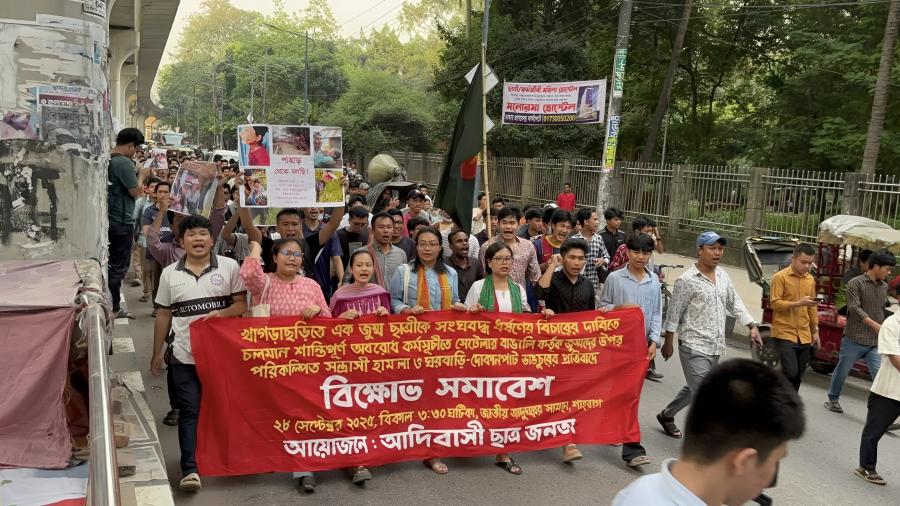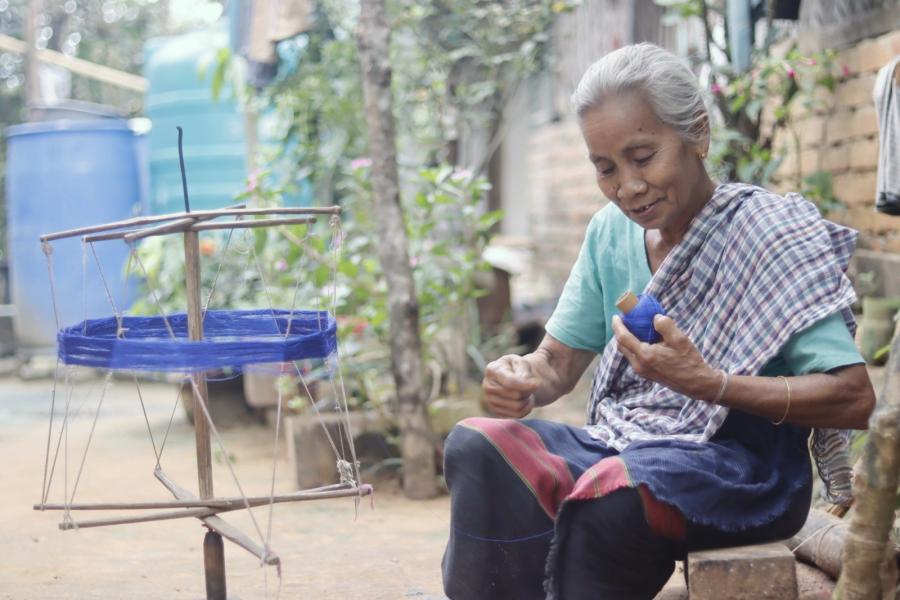These are some of the questions that have framed Mapping Our World, a children's rights and research project which has worked with young people from Bangladesh, Canada, Colombia, the Dominican Republic, India, Nicaragua, the Philippines, Rwanda, Uganda and Zambia.
The project's intention is to provide a forum where children can speak and adults listen. To provide a structure for this work, Mapping Our World created a five-day workshop process where children (aged 12 to 17) were invited to use drawing, painting, writing, photography and video to "map" their lives. Activities in these workshops included story drawings, time charts, peer interviews, memory maps, mask making, hand prints, group writing and individual self portraits. These workshops have been conducted with former child soldiers, garment workers, students, agricultural workers, children of the street and other youth living in difficult circumstances.
In the beginning, Mapping Our World's main focus was on public education, primarily for a Canadian audience. However, it soon became evident that these sessions could and should fill other needs, ones more directly connected to the participants' lives. The Mapping Our World project has been restructured to serve three complementary objectives.
1. The primary focus of the workshops is the interests and concerns of the participants. The overall workshop approach remains connected to the idea of personal mapping as participants describe, analyze and symbolize the world they inhabit. For some, this mapping is fixed inside a physical space; for others time or memory has greater importance. The workshops are tailored to the children's situations. At the beginning of each session the group discusses and changes the suggested activities to suit their needs and interests.
2. Partnerships with local community programs are an important part of the project's work. These include a pre-workshop planning session as well as co-facilitation of the sessions. Information acquired during the sessions is shared with the friends/family of the workshop participants as well as relevant local organizations. In the case of waraffected children, this has included psycho/social counsellors who have used the children's artwork as a preliminary assessment tool.
3. Mapping Our World's public education role has been maintained. An exhibit of children's artwork, titled Children of the Wind, is currently travelling in Canada. In addition, the results of the Mapping Our World workshops are increasingly being used for local education work in the communities where the sessions take place.
The pictures in this article were produced during workshops with former child soldiers in northern Uganda.
In these workshops with child soldiers, gender differences were an important consideration. Where boys had been pressed to be active and aggressive warriors, most of the girls learned to be submissive to any and every command. While the girls understood "life in the bush" as a vile time dominated by soldier "husbands," the boys were consumed with the horrors of armed combat.
The "memory maps" of boys and girls were obviously different. If one group needed description to gain and give forgiveness, another required outlets to explore feelings of anger and outrage. Where girl soldiers wanted to ridicule their past, boy soldiers yearned for a vestige of self-dignity.
In the workshops we struggled to create "map outlines" that would connect with the participants' imagination and sense of the past. Not every activity was successful but several did work well.
Boy soldiers loved creating elaborate paintings and drawings of guns to show their intimate knowledge of these machines. They repeatedly told the same stories of their times in the bush. Girl soldiers had no interest in these activities, but they responded enthusiastically to the idea of producing caricatures of their soldier husbands. The girls roared with laughter as they explained these pictures, making fun of the horrible men who had been their husbands.
What has this work shown us? First and foremost, the need for flexibility in doing research with children. We cannot predict children's needs or responses. Instead, we must be attentive listeners, following their leads to create the framework they require to make an accurate description and analysis of their concerns.
Life in the Bush: I remember one time...We walked and walked and walked and walked.
I was really scared.
Because my leg started to swell. I knew if they saw it I would be killed.
Because that is what they did to children whose legs swelled.
Because they couldn't march so well.
We walked for a little time. Then a soldier looked at me and saw my leg. He said to me, "You need a rest, you look so tired. Don't you want a rest?"
I got even more scared because I knew this meant that they were going to kill me, because when they asked you to rest -- that's when they kill you.
I said, "No, no, I am happy to walk. I want to go further." So he let me go on.
When you first arrive, they put all the girls together. Then they call the officers so they can pick who they want for a wife. Even if you are very young. I was given to a really big man. He was blind on one side. So he didn't see that I was very young.
They came very early in the morning. I was already up and had gone outside. I was just looking around. Then I saw them and they saw me.
They yelled, "Come here, come here right now." My mother came rushing out of the house and they shot at her. She ran back in.
So I went over to where they were because then I saw that they already had my brother. They were beating him. The soldiers had several boys. They said, "Who wants to be with us? Who wants to be a soldier?"
I said, "Me, me -- I want to," because I was afraid that they would kill me if I didn't say that. I was in the bush with the soldiers for a year and a half.
I was 13. You can see in the picture that I was coming home from school. There I am with my schoolbag.
The rebels were hiding in the bushes. When I got closer they shouted, "Hey you, come over here!" I did that. Then one pointed his gun at me and said, "Take off your blouse." I did that. Then all I had was my skirt. They tied my hands behind my back. They said, "Walk." I did that.
There was a man carrying a RPG in front, and another one behind me. I was all by myself, just me with these two soldiers, just me and them. I was so scared. I thought they were going to kill me. Instead, they took me to a camp where there were other girls and boys.
They never gave me back my blouse.
This picture is of the man who was my husband. It is the face of death.
Article copyright Cultural Survival, Inc.


